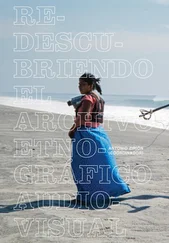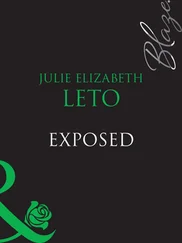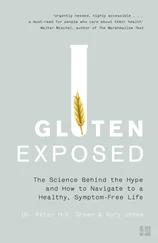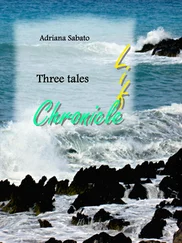Research in Russia shows that social organizing in response to economic pressures also transcends class, educational, and employment categories. See Ahl 1999.
To enter the system, sufferers were required to show proof of dose. Acceptable forms included documentation of (1) residency in one of the four zones; (2) a dose of irradiation exceeding the allowable threshold norms; (3) a dose value deduced from work routes, meteorological measurements, or chromosomal aberration counts; (4) a period of work in the zones; (5) degree of loss of labor capacity based on medical records; or (6) a court appearance in the company of witnesses testifying to the claimant’s presence in the zones.
These numbers do not include children. In return for gaining and keeping their status, sufferers are obligated to undergo mandatory annual medical examinations. Compensation for sufferers includes free access to medicine, dental work, specialized medical care, and annual treatments in sanatoria. If a person has changed to a lower-paid or lower-ranked occupation owing to illness, the difference in salary is paid by the state. Paid sick leave is guaranteed during periods of treatment in sanatoria or of occupational disability. Other compensatory items include a guaranteed apartment, a free car, “clean groceries” at special stores, free public transport, free telephone service, interest-free loans for starting one’s own business, paid vacation, monthly apartment rental subsidy, annual fuel subsidies, interest-free loans with government repayment of 25-50 percent of the principle for purchase of residence, allowances for persons living in high radiation zones, construction loans for relocated families, the right to purchase food at 50-75 percent of its actual cost, food items or cash equivalents for families with children too ill to go to school, and exemptions from payment of all taxes and customs duties. One of the best state protection packages is offered to parents with children who were born on or after April 26, 1986, in the zones. These children are given complete state protection until they reach school age. Families with children who are “disabled” receive yearly payment in the form of three minimal salaries as compensation for the damage of each child. Thus the system doubles as a form of welfare. For a complete list of benefits, see World Bank 1993:213-216.
“Center for Informing the Population on Questions Regarding the Liquidation of the Consequences of The Accident,” Vidlunnia, October 4, 1996, Zhytomyr, Ukraine.
Ibid.
I take this appropriation as one aspect of the way images of suffering become objectified, how these objectifications are enacted by sufferers in ways that mask the stakes of human pain in bureaucratic and policy arenas. See Kleinman and Kleinman 1997.
Volodymyr Shatylo, Chernobyl Ministry, Zhytomyr, Ukraine, November 1996.
This statement refers to persons who did not hold a job within the official economy and were suspected of living on “unearned income.”
Correspondence, April 15, 1997.
These committees are related to the overall Medical-Labor Expert Commission (in Russian, Vrachebno-Trudovaya Expertna Kommissiia ). I refer to them as the Ekspertiza. These committees were founded throughout the Soviet Union in 1932 and at the height of Stalinist collectivization and industrialization campaigns. Their function was to arbitrate occupational disability claims.
Since 1991, Ukraine’s economy has been characterized by economic and labor market declines and increased poverty. Exchange rates per $1.00 US plunged between 1992 and 1993. Instead of decreasing or phasing out state benefits or targeting most vulnerable groups, the state opted to maintain the real value of cash benefits, increasing social benefits and cash allowances to pensioners, the disabled, and other vulnerable groups. In 1992, the country’s spending on the social sector constituted 40 percent of the GDP, far more than that of any other country in the world (World Bank 1996:1-3).
This to some degree follows a Soviet tradition in which higher wages were paid to compensate for hard manual or risky labor in difficult climatic conditions, such as in Siberia or at remote nuclear installations.
This organization is called the Medsanchas (medical sanitation unit). It contracts with the center to provide partial salaries and patient referrals from the Zone, particularly for cases in which a worker should receive additional monitoring before going on disability.
Po blatu means “by protection,” or “by patronage.”
See Chornobyl’ska Tragediia 1996.
These requests were made from the Council of Ministers of the USSR to the Ministry of Finance of the USSR, from the Council of Ministries of the republic of Ukraine to the Central Committee of the Communist Party of Ukraine or to the Ministry of Energy of the Soviet Union ( Chornobyl’ska Tragediia 1996).
Mohyl’nyky are scattered across the Zone; in them contaminated equipment was destroyed and radioactive debris was buried.
Under Soviet laws governing worker disability, professional trade unions ( profspilky ), not individual state enterprises, were financially responsible for compensating the disabilities and deaths of workers returning from work in the Zone. The cost of the health burden of the Chernobyl cleanup essentially fell on these unions. To eliminate the cost, the unions began to work very closely with the Ukrainian republican apparatus to draft the Chernobyl laws.
Volodymyr Yavorivskyi, chair of the Democratic Party, Kyiv, November 1996.
Thus “no one was responsible for them. If these things were really contaminated, then the authorities should have registered these items with some actual value, so that in the case they are taken out of the Zone, some tariff on these goods could be extracted, so that some responsibility for these items could be guaranteed.” Member, Ukrainian Parliamentary Commission on Chernobyl, September 1996.
See Kovalchuk, “Ukraine: A Ministry That Started with a Bang,” 1995.
“The Ukrainian SSR mandates the juridical regime of the Exclusion Zone, establishes contracts regarding work within the Zone with state organs of the Soviet Union and its other republics, foreign countries, and international organizations.” “State Declaration on the Legacy of the Chernobyl Disaster,” 1991.
There are 77 regionally based facilities; 24 oblast children and adult facilities; 121 specialized dispensaries ( spetz dispensary ). For example, the Kyiv oblast hospital No. 2 has 240 beds. The Kyiv spetz dispensar for radiation protection has 140 beds. The Radiation Research Center has 250 beds. Since 1990, the number of sufferers increased thus: 1990—94,000; 1991—1,200,000; 1992—2,800,000; 1993—2,915,000; 1994—3, 193,000; 1995—3,200,000.
The name of this village has been changed.
Personal communication, Radiation Research Center, Kyiv.
Читать дальше












